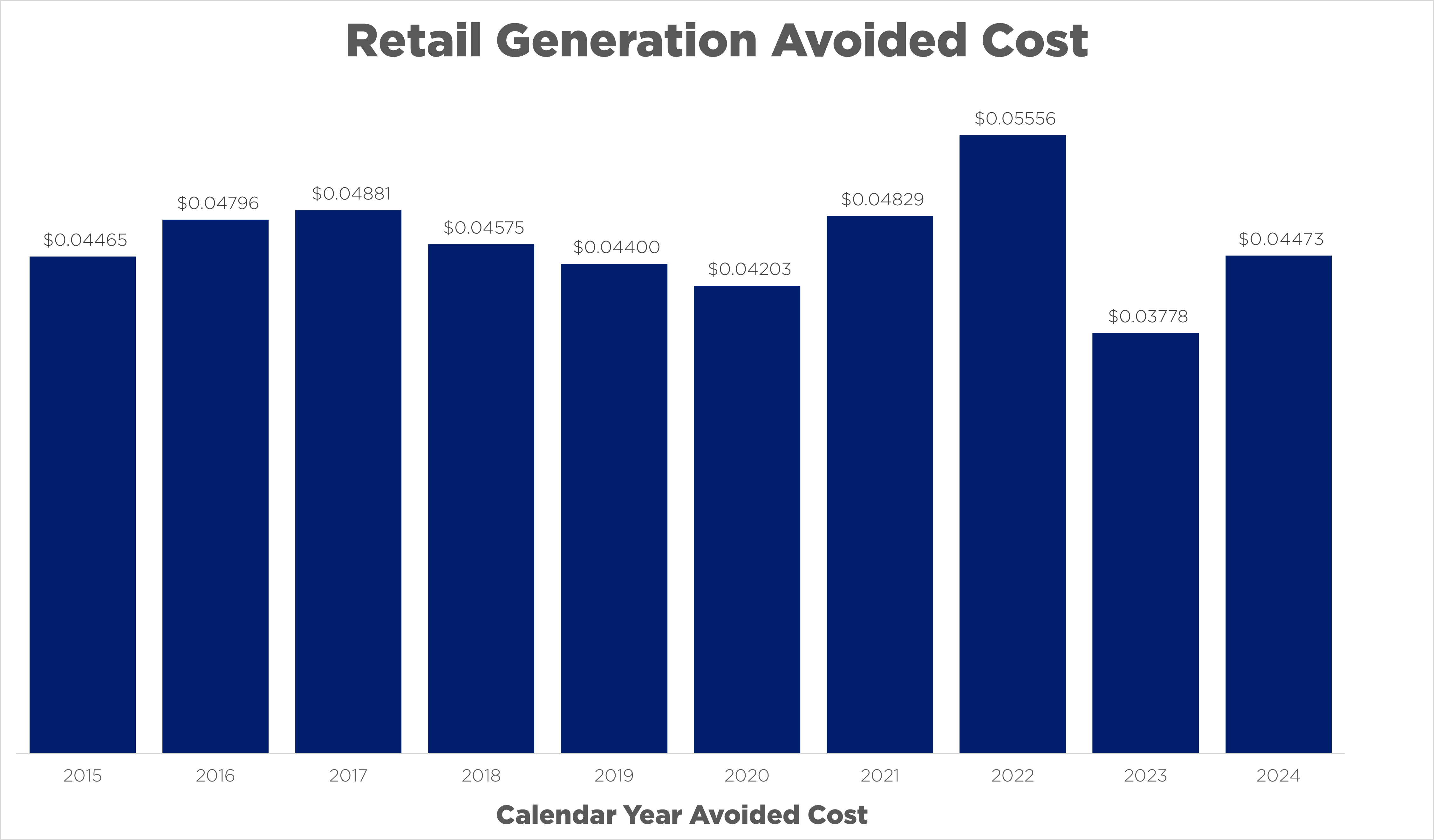Generation Interconnections
If you use solar, wind, biomass, new hydropower, recycled energy or hydrogen fuel cells and your generation capacity is less than 10 kilowatts for your home, or 25 kilowatts for your commercial or industrial business, your generation system may be eligible for CORE’s net metering. Larger systems may also be eligible to interconnect as Qualifying Facilities and be subject to reimbursement from CORE for power generated to the electric grid. Applications for interconnection and system requirements are set forth in the following documents:
Net-metered only
Refer to Level 1 requirements in our Small Generation Interconnection Procedures and Small Generation Interconnection Guidelines.
Qualifying facilities 25 kW or less
Refer to Level 1 requirements in our Small Generation Interconnection Procedures and Small Generation Interconnection Guidelines.
Qualifying systems less than 5 megawatts
Refer to Level 2 requirements in our Small Generation Interconnection Procedures and Small Generation Interconnection Guidelines.
Qualifying facilities larger than 5 megawatts and less than 20 megawatts
Refer to Level 3 requirements in our Small Generation Interconnection Procedures and Small Generation Interconnection Guidelines.
Qualifying facilities larger than 20 megawatts
Refer to the requirements in our Large Generation Interconnection Procedures.
Generators and energy storage for back-up power
Net Metering FAQs
How does net metering work?
The energy your interconnected renewable system generates directly offsets energy that CORE provides you on a kilowatt-hour-to-kilowatt-hour basis. If your system generates more energy than you consume, it is delivered to CORE’s distribution system. If, during a monthly billing period, the energy delivered to CORE exceeds the amount of energy delivered to you from CORE, that energy is credited and carried forward to offset use in future months. An annual “true-up” is performed each year within 60 days of the end of the April billing cycle, at which point CORE provides a bill credit or refund for any remaining excess generation accrued at CORE’s avoided cost of power, as calculated by CORE for the previous calendar year.
What are distributed generation (DG) resources?
DG systems are small-scale, on-site power generating sources located at or near members’ homes or businesses. Some common examples include rooftop solar panels, micro-turbines, small wind and combined heat and power systems. Members with these types of generation systems connect to the local electric grid and use the grid both to buy power from CORE during times when their DG systems are not producing enough to meet their needs and to sell power to CORE when their systems are producing more electricity than is needed.
What is meant by net metering?
Net metering is a billing function that allows members with DG resources to offset their energy usage by their DG output and effectively “sell” any excess electricity generated by their DG systems back to CORE at the retail rate.
What costs are included in CORE’s current net-metering energy rate?
The energy your interconnected renewable system generates directly offsets energy that CORE provides you on a kilowatt-hour-to-kilowatt-hour basis. If your system generates more energy than you consume, it is delivered to CORE’s distribution system. If, during a monthly billing period, the energy delivered to CORE exceeds the amount of energy delivered to you from CORE, that energy is credited and carried forward to offset use in future months. An annual “true-up” is performed each year within 60 days of the end of the April billing cycle, at which point CORE provides a bill credit or refund for any remaining excess generation accrued at CORE’s avoided cost of power, as calculated by CORE for the previous calendar year.
What is meant by avoided cost?
The avoided cost of energy in this context refers to the cost associated with fuel, purchased energy, generated and purchased capacity, and line losses (expressed as a per-kilowatt-hour cost) CORE can avoid by purchasing the energy from a net-metered member.
CORE’s avoided cost from May 2024 through April 2025 was $0.03778 per kilowatt-hour. Our avoided cost starting in May 2025 is $0.04473 per kilowatt-hour.
For more information on net metering, call (303) 688-3100. If you want more information on renewable energy, consider purchasing Renewable Energy Credits.
Why does the avoided cost change each year?
The net meter true-up rate is based on our actual avoided costs during calendar year 2024, per our tariffs.
- The high avoided cost for calendar year 2021 was largely driven by the significant expense incurred by Xcel Energy during Winter Storm Uri, which elevated the February 2021 energy rate by about 3.5 times the normal range.
- The high avoided cost for calendar year 2022 was driven by high natural gas prices, which increased CORE’s energy rate from Xcel Energy by 20%. These high prices were compounded by a roughly five-month long outage of the Comanche Unit 3 coal plant.
- In 2023, natural gas prices returned to historical norms, Comanche Unit 3 was available most of the year, and CORE continued to add additional solar resources, both utility scale and retail.
- The increase in the avoided cost rate for 2024 is primarily attributable to an increase in capacity cost offset as Xcel Energy peaked earlier in the day than typical during summer months. This shift in the timing of CORE’s wholesale billing determinants, plus an increase in capacity costs, drove up the average rate, despite a decrease in the average cost of wholesale energy prices.

